Occupational Safety Training for Ice Skate Production
99,000 ₫
Note: The above price is calculated per person and may vary depending on the number of trainees participating in the course and market fluctuations. For more accurate pricing support, please refer to the price list or contact our consultation staff directly.
Occupational safety is an important issue in ice skate manufacturing factories and needs to be addressed promptly to ensure the health and safety of workers and enhance the reputation of businesses. The Occupational Safety Training course is one of the effective solutions to raise awareness about accident prevention for workers involved in ice skate production.
Table of Contents
Toggle1. Overview of Ice Skates
a. What are Ice Skates?
Ice skates are specially designed equipment for moving on ice. They consist of two main parts: the boot and the blade. Below are some basic points about ice skates:
1. Structure of Ice Skates:
- Boot: The boot is usually made from materials such as leather, synthetic fabric, or hard plastic to provide support and protection for the feet. For professional athletes, the boot may be designed to ensure better fixation and control.
- Blade: This is the part that directly contacts the ice surface. Blades are typically made from stainless steel or metal alloys to ensure durability and good gliding ability. They may have different designs, including single blade or double blade.
2. Functions:
- Gliding on Ice: Ice skates allow users to move easily on ice thanks to the blade which reduces friction and facilitates smooth sliding.
- Techniques and Sports: In sports such as figure skating, speed skating, or ice hockey, ice skates play an important role in performing technical moves and enhancing performance.
3. Types of Ice Skates:
- Figure Skates: Designed to help perform jumps and spins. The blade is usually longer and may have small teeth to support complex techniques.
- Speed Skates: Designed with longer and thinner blades to reduce resistance and increase speed. The boot is usually stiffer to stabilize and support the foot during fast movement.
- Ice Hockey Skates: Specially designed with shorter and wider blades to ensure flexible movement and good support during hockey play.
4. Care and Maintenance:
- Cleaning: After each use, the blades should be cleaned to remove dirt and prevent rust.
- Storage: Keep skates in a dry place and avoid prolonged exposure to water to extend the lifespan of both the blades and the boots.
Ice skates are an indispensable part of ice-related activities, helping users perform techniques and sports effectively and safely.

b. Machinery for Ice Skate Manufacturing
1. Cutting Machines for Leather and Materials:
- CNC Cutting Machines (Computer Numerical Control): Used for precise cutting of leather or synthetic fabric parts for the boot. CNC machines can handle various materials with high accuracy, helping reduce material waste.
- Laser Cutting Machines: Use laser technology to cut small and delicate details on leather or other materials. Laser cutters allow cutting complex shapes with high precision.
2. Sewing and Welding Machines:
- Industrial Sewing Machines: Used to sew the parts of the boot together. Industrial sewing machines work quickly and accurately, suitable for large production volumes.
- Thermoforming Machines: Use heat to shape materials such as plastic or rubber to ensure the boot has the required shape and rigidity.
3. Shaping Machines:
- Lasting Machines: Used to shape the boot according to standard molds. These machines help form the shoe structure and ensure proper fit for the user’s foot.
- Heat Press Machines: Used to press layers of materials together by heat, increasing durability and waterproofing of the skate.
4. Blade Processing Machines:
- Blade Grinding Machines: Used to grind and sharpen the skate blades. These machines create smooth, sharp blade surfaces to ensure good performance.
- Blade Polishing Machines: Used to polish the blade surface and remove scratches or rust, helping blades operate more efficiently.
5. Assembly and Finishing Machines:
- Assembly Machines: Used to attach the blades to the boots. Assembly machines improve accuracy and reduce assembly time.
- Quality Control Machines: Used to inspect quality indicators of ice skates such as durability, fit, and other safety factors.
6. Surface Treatment Machines:
- Surface Treatment Machines: Used to treat the skate surfaces such as cleaning, coating, or finishing to enhance durability and aesthetics.
7. Packaging Machines:
- Automated Packing Machines: Used to package ice skates after completion. Packaging machines ensure products are protected and prepared for shipping.

c. Famous Ice Skate Brands
1. Bauer
- Information: Bauer is one of the leading brands in ice skate manufacturing, especially prominent in ice hockey.
- Products: Bauer offers high-quality ice skates, including hockey and speed skating models.
- Features: Premium materials, optimized design for performance and protection, with frequent technological and design innovations.
2. CCM
- Information: CCM is another well-known brand in ice skates, especially in hockey and figure skating.
- Products: CCM provides skates for various sports, from hockey to figure skating.
- Features: Durable design, good foot support, with ongoing technology improvements to meet user needs.
3. Riedell
- Information: Riedell is famous for figure skating and speed skating boots.
- Products: Offers figure skating and speed skating boots with diverse design and material options.
- Features: High quality, refined design, focus on comfort and technical performance.
4. Jackson Ultima
- Information: Jackson Ultima specializes in figure and speed skating boots.
- Products: Known for comfortable skates that support technical moves.
- Features: Creative designs, durable materials, and advanced technology to enhance performance.
5. Edea
- Information: Edea is a renowned figure skating brand known for high-quality and innovative designs.
- Products: Figure skates with modern designs and advanced technology.
- Features: Lightweight materials, comfortable fit, high durability, favored by professional figure skaters.
6. Risport
- Information: Risport is famous for figure and speed skating boots.
- Products: Provides high-quality skates suitable for both professionals and beginners.
- Features: Sturdy design, comfort, and good support for skating techniques.
7. Graf
- Information: Graf is known for hockey and speed skating boots.
- Products: High-quality skates designed to enhance performance and protection.
- Features: Combination of modern design and advanced technology, offering protection and support.
d. Specific Jobs in an Ice Skate Manufacturing Factory
Group 1
- Executive Director, Deputy Executive Director, Department Heads in the ice skate manufacturing factory.
Group 2
- Safety Officers: manage safety in the factory, design safety procedures, supervise and enforce employee compliance with safe working processes.
Group 3
- Cutting Machine Operators: Operate CNC or laser cutting machines to cut parts of the skate from raw materials.
- Material Handling Technicians: Move and prepare materials for the next production stages.
- Sewing Machine Operators: Sew parts of the boot together as per design.
- Lasting Technicians: Use lasting machines to shape the boot according to standard molds.
- Blade Processing Technicians: Grind, polish, and treat skate blades to ensure quality and performance.
- Blade Installation Technicians: Precisely attach blades to the boots.
- Assembly Line Workers: Assemble components of ice skates and inspect details to meet standards.
- Quality Control Inspectors: Inspect and verify finished products to ensure quality standards are met.
- Packing Technicians: Package ice skates into boxes and prepare them for shipment.
Group 4
- Office, service, sales, marketing jobs.
- Production management, quality management, human resources, materials management, financial accounting management.
- Research and development of new products, product design, and packaging design.
2. Overview of the Occupational Safety Training Course for Ice Skate Production
Within the scope of this article, we focus on issues related to Group 3 because Group 3 directly participates in the production process and faces the highest occupational safety risks. For more information on other groups, see here.
a. What is Group 3 Occupational Safety Training?
- Group 3 Occupational Safety Training consists of sessions that equip workers with awareness on how to prevent occupational accidents.
- The occupational safety training course helps workers recognize and avoid hazards, reducing the risks of accidents during work.
REGISTER FOR OCCUPATIONAL SAFETY TRAINING SERVICE
b. Training Duration
Initial safety training duration
- The total training time is at least 24 hours, including examination time.
- 8 hours of theoretical study on the system of policies and laws on occupational safety and hygiene.
- 8 hours of theoretical study on basic knowledge of occupational safety and hygiene.
- 4 hours of theoretical study on specialized training content.
- 2 hours of practical training on specialized content.
- 2 hours of theoretical examination at the end of the training course.
The safety training center will divide the time into multiple sessions depending on the scheduling for employees. Usually, there will be 6 training sessions over 3 days, provided the manufacturing company arranges for continuous learning time.
Periodic safety training duration
- Before the occupational safety card expires, workers who want to renew must undergo a periodic occupational safety training, with periodic training time at least 50% of the initial training duration.
Explanation: The total periodic occupational safety training time is at least 12 hours, including examination time. Upon completion of the periodic training and passing the test, workers will be reissued or have their occupational safety card extended.
c. Training Content
| No. | TRAINING CONTENT | TRAINING DURATION (HOURS) | |||
| Total | Including | ||||
| Theory | Practice | Exam | |||
| I | System of policies and laws on occupational safety and hygiene | 8 | 8 | 0 | 0 |
| 1 | Overview of the legal normative documents system on occupational safety and hygiene. | 6 | 6 | ||
| 2 | System of standards and technical regulations on occupational safety and hygiene. | 1 | 1 | ||
| 3 | Specific regulations from state management agencies on occupational safety and hygiene when constructing, expanding, or renovating facilities for production, usage, storage, and inspection of machinery, equipment, materials, and substances with strict occupational safety requirements. | 1 | 1 | ||
| II | Basic knowledge of occupational safety and hygiene | 8 | 8 | 0 | 0 |
| 1 | Basic knowledge about hazardous and harmful factors in the workplace. | 4 | 4 | ||
| 2 | Methods to improve working conditions. | 1 | 1 | ||
| 3 | Safety culture in production and business. | 1 | 1 | ||
| 4 | Rights and obligations of employers and employees; occupational safety policies and regimes for employees; roles and responsibilities of safety network and hygiene officers. | 1 | 1 | ||
| 5 | Occupational safety and hygiene regulations, safety signs and signals, use of safety equipment and personal protective equipment; skills and procedures for first aid, accident prevention, and occupational disease prevention. | 1 | 1 | ||
| III | Specialized training content | 6 | 4 | 2 | 0 |
| Comprehensive knowledge about machines, equipment, substances producing hazardous and harmful factors; risk analysis, assessment, management regarding occupational safety and hygiene; safe working procedures with machines, equipment, and substances requiring strict safety measures. | 6 | 4 | 2 | ||
| IV | Final safety training exam | 2 | 2 | 0 | 0 |
| Total | 24 | 22 | 2 | ||
See more training content for all 6 groups.
d. Occupational Safety Card
After completing the occupational safety training and passing the exam, workers will be issued an occupational safety card (commonly called the occupational safety certificate for Group 3).
The Group 3 safety card clearly shows information such as full name, date of birth, job position, and specific work environment. It also includes training duration, a red stamp, and a signature confirming completion of the training course.
According to regulations on card issuance detailed in Clause 2 of Article 24 of Decree 44/2016/ND-CP, there are two cases:
- If the employer and employee have a labor contract, the employer must sign, stamp, and endorse the safety card for the Group 3 trained person after completion of the training and passing the exam from the training unit.
- If the worker is freelance or temporary, without a labor contract, the training unit must sign, stamp, and endorse the safety card after the worker completes the training and passes the exam.

3. Identifying Hazards Affecting Workers in Ice Skate Production
Mechanical Hazards:
- Machinery and Equipment:
- Hazard: Machines such as cutters, sewing machines, and grinders may cause injuries from collision, cuts, or abrasion.
Material Hazards:
- Chemicals and Toxic Materials:
- Hazard: Chemicals used in production, such as adhesives, paints, and solvents, can cause skin irritation, respiratory issues, or poisoning.
Hazards from Motors and Equipment:
- Electrical and Thermal Hazards:
- Hazard: Risks of electric shock from electrical equipment and burns from thermal devices like heat presses.
Hazards from Packaging and Transportation:
- Physical Hazards:
- Hazard: Injuries from lifting and moving heavy objects or repetitive motion, possibly leading to back pain or musculoskeletal disorders.
Environmental Hazards:
- Work Environment:
- Hazard: Unfavorable working conditions, such as extreme temperatures, may cause health issues like heatstroke or cold stress.
Hazards from Production Processes:
- Working in Confined Spaces:
- Hazard: Working in cramped spaces may cause injuries due to collisions or limited movement.
Hazards from Poor Quality:
- Non-compliant products:
- Hazard: Producing substandard products may cause incidents during use, affect user health, and pose legal liability risks for the manufacturer.

4. Safety Measures in Ice Skate Production
General Safety Measures:
- Safety Training: Provide regular occupational safety training for all staff, including proper use of personal protective equipment, incident handling procedures, and preventive measures.
- Provision of Protective Equipment: Ensure workers use appropriate personal protective equipment such as gloves, safety glasses, helmets, and safety shoes.
- Maintain Cleanliness: Keep the work area clean and tidy to reduce the risk of slips, trips, and other accidents.
- Periodically conduct occupational environment monitoring within factories, collecting and analyzing harmful factors to adjust and reduce hazards and prevent occupational diseases.
Safety Measures for Machinery and Equipment:
- Maintenance and Inspection: Conduct regular maintenance and inspections to ensure machines operate safely and effectively.
- Use Protective Devices: Ensure machinery has protective guards and emergency stop switches. Workers must not remove protective devices without authorization.
- Operator Training: Provide in-depth training on safe operation of machinery and the use of protective devices.
Safety Measures for Materials:
- Safe Chemical Handling: Use chemicals in well-ventilated conditions and follow safety procedures. Provide protective equipment such as masks, gloves, and goggles when handling chemicals.
- Proper Chemical Storage: Store chemicals in sealed containers with warning labels. Ensure safety signage and chemical spill response measures are available.
Safety Measures in Assembly and Finishing:
- Use Safe Lifting Techniques: Train employees on safe lifting methods and use supporting equipment like forklifts to move heavy items.
- Avoid Working in Confined Spaces: Design work areas with sufficient space for movement and tasks. If confined space work is necessary, ensure safety measures are implemented.
Safety Measures in Inspection and Packaging:
- Quality Control: Perform quality inspections following standard procedures to ensure products do not pose risks to users. Properly handle defective or non-compliant products.
- Safe Packaging: Use suitable packaging equipment and ensure workers are trained in safe operation of such equipment.
Safety Measures for Work Environment:
- Temperature Management: Ensure working conditions are not excessively hot or cold. Use ventilation and air conditioning systems if necessary.
- Ensure Adequate Lighting: Provide sufficient lighting for workers to perform tasks safely and effectively.
Risk and Incident Management:
- Emergency Response Planning: Develop and implement emergency response plans for situations such as fire, chemical leaks, or workplace accidents.
- Incident Handling Instructions: Provide specific guidance on handling incidents and ensure first aid kits and rescue equipment are available in work areas.
Evaluation and Improvement:
- Regular Inspections: Conduct periodic safety inspections and risk assessments to detect and address potential issues.
- Process Improvement: Based on feedback and inspection results, implement process and safety measure improvements to enhance the work environment.
5. Benefits of Occupational Safety Training for Ice Skate Manufacturing
An Toan Nam Viet offers your enterprise the following excellent benefits upon completion of occupational safety training courses as regulated by Decree 44/2016/ND-CP on Occupational Safety and Hygiene, for companies, factories, and enterprises.
- Workers can identify potential occupational accident hazards and thereby take preventive measures to avoid accidents.
- Your enterprise can establish risk prevention measures in production, operation, and maintenance processes.
- Reduce costs related to occupational safety risks.
- Uninterrupted production processes help increase labor productivity and product quality.
- Ensure compliance with occupational safety laws to avoid legal risks.
- Create credibility and professionalism in all aspects, thereby elevating your company’s brand.
Nam Viet’s training courses are solutions to prevent and combat external factors impacting individuals, helping them avoid dangers that may lead to injuries or even fatalities.
REGISTER FOR OCCUPATIONAL SAFETY TRAINING SERVICE
6. Customer Feedback After Completing Occupational Safety Training for Ice Skate Manufacturing
An Toan Nam Viet has many years of experience accompanying numerous enterprises across Vietnam in general, and in the southern provinces in particular. This responsibility is very precious to Nam Viet, which is why our Occupational Safety Training services are increasingly professional. The motivation for An Toan Nam Viet’s growth comes from positive feedback and suggestions from our clients. Below are some testimonials from our valued partners we have served.
Hoa Dat Construction and Trading Joint Stock Company
“Nam Viet’s service helped us greatly simplify occupational safety and complete safety documentation for our work process. The consulting staff were enthusiastic and timely in answering our questions. 5 stars for Nam Viet.”
See more customer interviews after using An Toan Nam Viet’s services
7. An Toan Nam Viet’s Capacity for Occupational Safety Training
An Toan Nam Viet is a reputable and high-quality occupational safety training center in Vietnam today. Our training sessions take place continuously at manufacturing workshops, factories, or construction sites across the country (all 63 provinces in Vietnam).
REGISTER FOR OCCUPATIONAL SAFETY TRAINING SERVICE
Occupational Safety Training License
- An Toan Nam Viet has been inspected and certified by the Department of Safety under the Ministry of Labor, Invalids and Social Affairs for meeting the conditions to operate occupational safety and hygiene training. This further strengthens our capacity for occupational safety training.

Materials and Lectures
- Before being used in occupational safety training courses, the materials are reviewed and approved to ensure the lessons are accurate and effective when applied.
- The teaching methods of instructors are standardized according to An Toan Nam Viet’s standards, which are researched and developed by experts in occupational safety and hygiene training to maximize knowledge absorption for learners.
Facilities
- Controlling classroom factors that affect training improves teaching efficiency and learners’ knowledge retention.
- Our training facility provides spacious classrooms that meet standards for area, lighting, training equipment, etc.
8. Nationwide Reputable Occupational Safety Training Center
At An Toan Nam Viet, we always prioritize the profession of occupational safety training. For us, imparting knowledge so workers can protect themselves equips them with safety on their livelihood path, contributing to national development.
To ensure effective training, we carefully prepare every detail, no matter how small — from tools, teaching equipment to curriculum, materials, audio, and lighting.
Our occupational safety instructors are experts with many years of experience. Some even have research projects identifying hazards across all industries and ways to prevent them.
Instructors’ lessons are based on practical experience and delivered vividly and understandably to workers. These factors help learners feel comfortable and absorb knowledge well. Of course, the content strictly follows Decree 44/2016/ND-CP.
Thus, learners understand many hazard prevention measures and how to protect themselves, applying these appropriately in real work situations.
Our training center proudly provides reputable and professional occupational safety training services with these advantages:
- Competitive training costs while ensuring quality.
- Flexible training schedules to suit company production conditions.
- Quick and lawful certification procedures.
- Instructors with many years of experience.
- Classrooms controlled for factors that enhance teaching efficiency and learning effectiveness.
- Lessons tailored to occupational safety at enterprises.
- An Toan Nam Viet works dedicatedly and professionally to provide accurate and fast customer support.

9. Additional Reference Materials for Occupational Safety Training in Ice Skate Manufacturing
- Occupational Safety Materials for Ice Skate Manufacturing
- Occupational Safety Training Materials Collection
- Occupational Safety Training Test Collection
- Occupational Safety Training Curriculum for Ice Skate Manufacturing
- Occupational Safety Multiple-Choice Test for Ice Skate Manufacturing
No comments yet

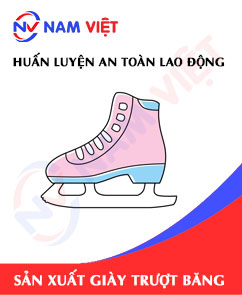

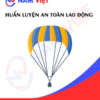



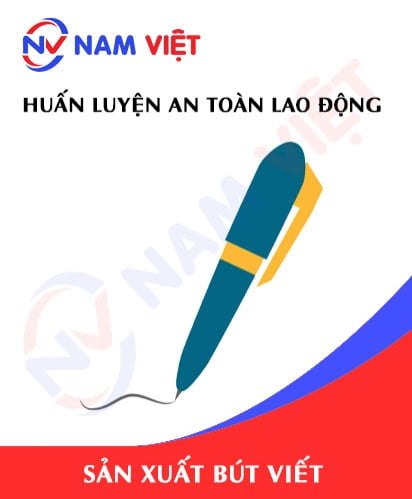
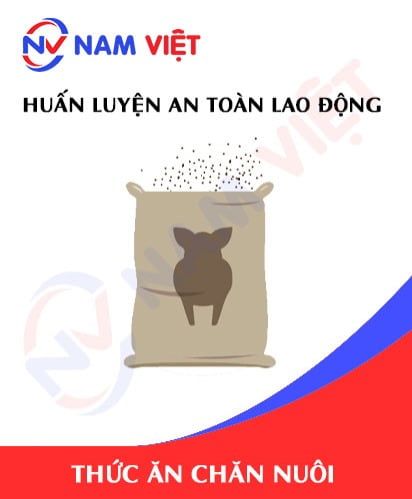


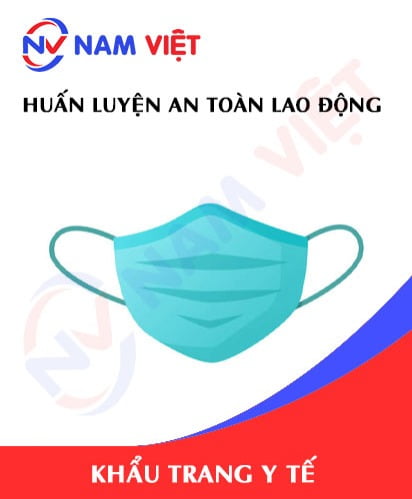

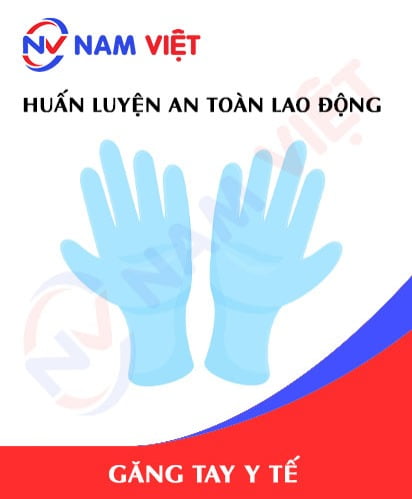
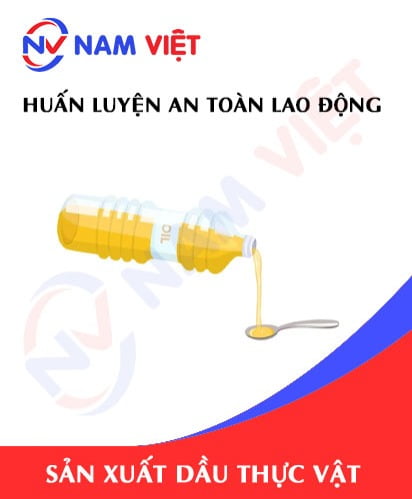
Review Occupational Safety Training for Ice Skate Production
There are no reviews yet.